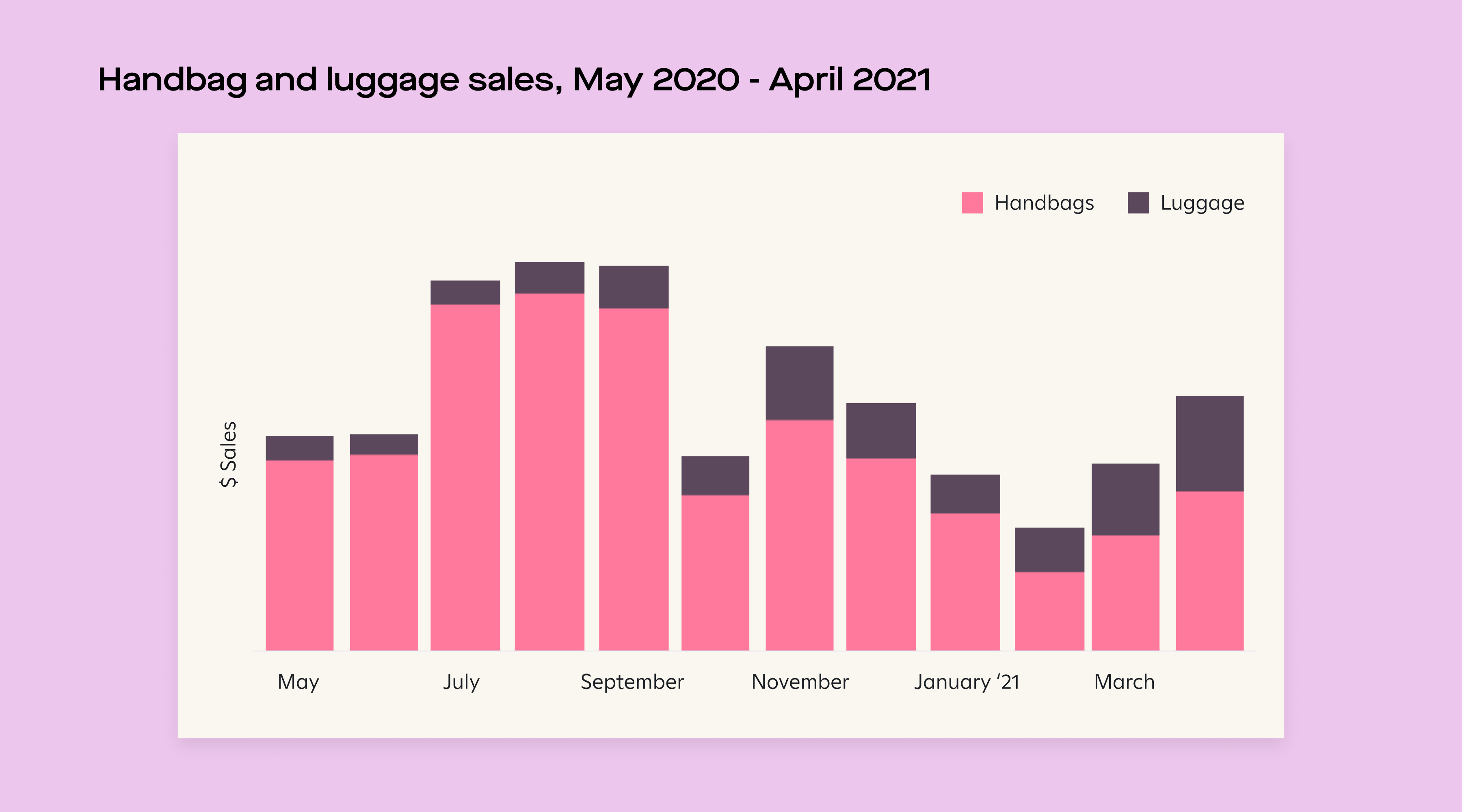
New releases
A smarter, simpler Attentive
Explore new features →
Explore new features →

We had a suspicion that months of pent-up demand would translate into people spending more on apparel, beauty, and travel-related products.
So we decided to dig into anonymized data from our 3,000+ customers to better understand where brands have the opportunity to maximize revenue by tapping into shifting consumer preferences. We discovered that after a year of dressing for comfort, consumers are moving into a post-pandemic mindset. And brands in the apparel, accessories (including travel), and beauty categories have an opportunity to engage shoppers as they switch up their look and return to offices, restaurants, and social events.
Our month-over-month data trends highlight key areas where consumer needs are shifting. We’re sharing messaging strategies to help your brand quickly meet your audience’s needs—and stay ahead of the curve as we embark on a return to a new “new normal.”

Consumers are embracing “revenge dressing”—think up-leveled outfits and products that we’ve deprioritized over the last year, like jeans. We want to feel great about ourselves as we step outside our living rooms. Several trends drive this desire to express our personal taste:
As a result, apparel sales have jumped to near-holiday season levels over the past two months. According to anonymized data from our 3,000+ customers, consumers spent 39.9% more on apparel in March than in February, and sales have remained high. Luxury goods have also grown, increasing 15.9% in April compared to March.
Now fully accustomed to online shopping, consumers are turning their homes into dressing rooms. Between having a larger selection available online and brands’ flexible return policies, shoppers say that they’re spending more online, too. While some end up returning items that won’t work, many ultimately keep them.
Let’s face it, we’re all ready for a new pair of jeans. Consumer demand for more formal and denim items is at an all-time high, presenting your brand with an opportunity to drive sales. As we ease back into pants with zippers and other dressier items, both luxury and ready-to-wear brands have an opportunity to help shoppers revamp their wardrobes.
Help your shoppers experiment with their styles by sending outfit and capsule wardrobe recommendations, inspired by their ideal activity. From a night out on the town to a weekend spent exploring farmers’ markets, curated lookbooks and user-generated content is a powerful cross-selling strategy. Consider setting up a post-purchase message inviting email and SMS subscribers to tag your brand on social media when they post about their new looks.

We’ve spent the last year investing in products to help us achieve our skincare goals. Now that our skin is glowing, and we’re spending more time face-to-face with others, it seems that shoppers are interested in adding cosmetics back into their routine.
From May to September 2020, cosmetics sales were relatively low. Consumers briefly returned to old habits during the holiday season, likely purchasing cosmetics as gifts for loved ones. After a period of falling sales, cosmetics purchases reached holiday-season levels in April 2021, spiking 82% compared to March 2021.
After a year of staying in, we’re ready to bring back color and cat eyes. Shifting your brand’s messaging towards going out will help you tap into pent-up consumer demand and your audience’s needs. Sending tutorials and product recommendations for “night out” looks allows consumers to experiment with new cosmetics—and ease into wearing these looks out when they feel ready to do so.
The spike in cosmetics sales may also be a result of consumers needing to replace their expired cosmetics after a year of little-to-no use. To help your shoppers find their new favorite items, recommend new products and send personalized replenishment campaigns to your most loyal customers.

As people continue to get vaccinated, they’re becoming more comfortable with planning summer social activities and travel. Luggage and handbag sales are following the same trends as last summer, when sales spiked as the first COVID-19 wave subsided.
Handbag sales have jumped over the past two months, increasing 47.5% in March compared to February, and another 36.9% in April compared to March. Ahead of anticipated summer travel, shoppers are also buying new luggage. Luggage sales have increased 153.3% since January 2021, leaping 55.8% month-over-month in March and another 34.1% month-over-month in April.
Some brands may be reluctant to lean into travel-related messaging to ensure they’re sensitive about safety. But the rapid shift in consumer habits presents businesses with a significant opportunity to drive sales as people begin booking their summer travel. Connect with your audience over the destinations and experiences they’ve been dreaming about by sharing curated product collections based on trips—from pasta-making courses in Italy to sea kayaking in Vancouver.
Because we all have different levels of comfort with travel right now, consider asking subscribers whether they have any trips planned for the summer (big or small). Create a segment of subscribers who’ve indicated they’ve got the travel bug, and send travel-related messages just to that audience.
As consumer behavior continues to shift, we’ll be monitoring trends to help you stay nimble with your marketing, and adjust as needed to create more personalized and timely experiences for your customers.
Want to know how marketers are approaching SMS marketing in 2021? Explore our 2021 SMS Marketing Benchmarks Report to discover how marketers are using personalized text messaging to meet consumer demand, drive engagement, and optimize their strategies.